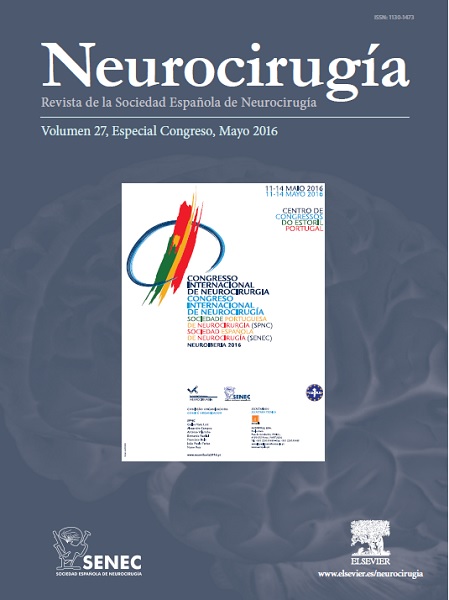O-FUN-2 - Usefulness of intraoperative visual function monitoring during neurosurgical procedures
Hospital Universitari Germans Trias i Pujol, Barcelona.
Introduction and objectives: Intraoperative visual evoked potentials (VEP) feasibility and reproducibility under general anesthesia were not clear for years. The aim of this study is to evaluate intraoperative VEPs reproducibility and its value to predict the visual function postoperative status.
Material and methods: Intraoperative monitoring of ERG and transcranial VEPs (tcVEP) was attempted in 30 patients (60 eyes) who underwent surgical procedures including 11 parasellar and 16 cortical lesions and 3 mesial sclerosis. Cortical VEPs (CVEP) were recorded simultaneously in 6 patients (12 eyes). White-light flash stimulation was provided by 18 diodes embedded in a silicone disk. We defined warning criterion as a 50% decrease in amplitude compared with the baseline level. We evaluated VEP reproducibility and the correlation between intraoperative VEP events and the postoperative visual function prognosis.
Results: Stable ERG was obtained in all less 2 eyes. Reproducible tcVEPs and cVEP were recorded in 96.6% (29/30) and 83,3% (5/6) of patients, respectively. We detected pathologically significant events in 6 patients. Four of them recovered intraoperatively, without developing any postsurgical new visual deficit. Two patients presented with persistent cVEP and tcVEP deterioration, respectively, with a worsening of preoperative visual function. In 24 patients without any significant amplitude changes in tcVEP, 22 showed no change, 1 developed a new visual deficit (homonymous quandrantanopia) and 1 manifested improved visual function postoperatively.
Conclusions: Intraoperative transcranial and cortical VEP monitoring is feasible and reproducible. It should be considered to prevent visual function deterioration during neurosurgical procedures where optic pathways were in risk. cVEP recording is specially recommended in case of retrochiasmatic lesions.







